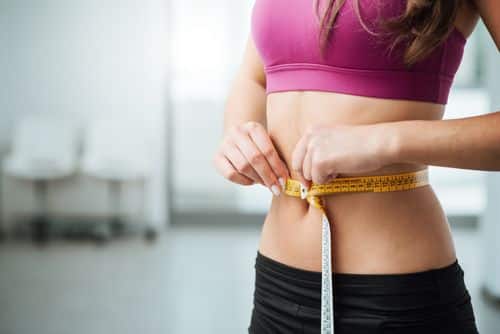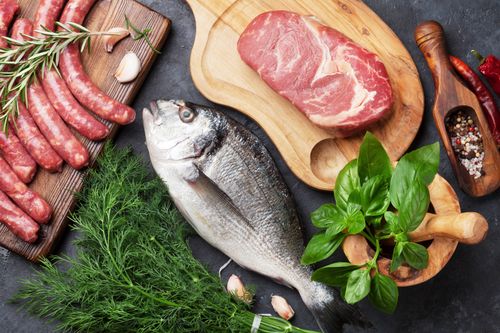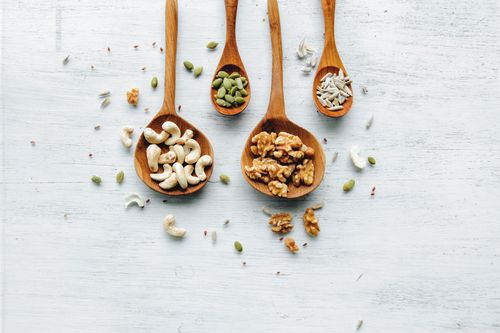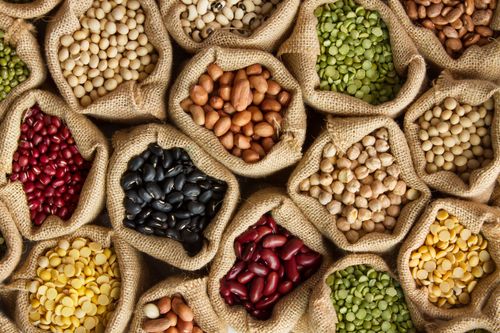Paleo Diet Chart – Foods, Benefits and Side Effects

Kamala Somasundaram
June 20, 2022

Kamala Somasundaram
June 20, 2022
The Paleo diet is a popular 21st century diet. However, it gained popularity only in recent years, the Paleo Diet came into existence in the 1970s. Its popularity stemmed from its contribution to weight loss. Let’s look at what a Paleo diet actually is and how beneficial it can indeed be.
The Paleo Diet resembles what the hunter-gatherer ancestors of human beings consumed in the palaeolithic age. These hunter-gatherer ancestors had fewer lifestyle disorders like obesity, diabetes and heart diseases. It can be attributed mainly to their whole food-based diet and physically active lives.
Several studies prove that the paleo diet can result in weight loss. However, you must note that HealthifyMe does not recommend following the Paleo Diet in its purest form. If you’re looking to follow the paleo diet, you must make the necessary changes to suit your requirements. If you’re looking to achieve weight loss, we have the best Indian Diet Plan for it here.
It is the traditional form of the paleo diet, strictly as per the norms of ancestral times. It does not have any moderation or scope for innovation. Processed and packaged foods, soft drinks, sugar, sweeteners etc., are prohibited in this diet. In other words, you need to stay away from any food processed in a factory.
It is a modified and new version of the paleo diet. It is flexible and has new inventories in the diet like:
Like any other diet plan, the paleo diet has its own set of benefits.
One of the main features of a paleo diet is the consumption of unprocessed food. Therefore, a paleo diet tends to be very low in carbohydrates. That is because it excludes foods like processed grains.
Processed foods and high-carb foods tend to affect one’s blood sugar levels. By removing these foods from your diet, the paleo diet can help lower blood sugar levels and reduce body fat. Thus, the diet enables you to achieve weight loss goals.
A few recent studies, revealed that healthy women who followed a paleo diet achieved more significant weight loss than those who followed a typical low-fat diet. Thus, there is evidence to support that the paleo diet helps you lose weight.

Since most paleo foods are relatively low-carb, there is less demand on the pancreas to produce insulin. Research shows that the paleo diet decreases insulin in the body and increases the effectiveness of insulin. It, in turn, reduces insulin resistance, the driving force of type 2 diabetes. As a result, some people may cut down on the amount of medication they need.
As part of the paleo diet, you eat low glycemic foods. It may help you avoid the drop in energy levels. Energy levels drop shortly after consuming high GI and sugary foods.
A paleo diet is rich in fruits and vegetables. Adequate amounts of fruits and vegetables in a diet lead to increased fibre intake. A good portion of fibre leads to improved digestion. It also relieves people from constipation. In addition, research shows that high levels of fibre help provide satiety for extended periods.
Higher levels of inflammation in the body increase the risk of several health problems, including type 2 diabetes. So, if you eat low-carb, low GI foods, it can prevent excess inflammation. That is especially true in the case of omega-3 fatty acids.
Inflammation can lead to many degenerative diseases like cancer, arthritis, cardiovascular diseases, pulmonary diseases etc. The Paleo diet is rich in antioxidants. Research suggests that the paleo diet may reduce inflammation. Therefore, it protects you from various degenerative diseases.
Apart from their benefits, the paleo diet deals with its own set of problems. A few of the side effects that you are likely to witness with a paleo diet are listed below:
You must take precautions before adopting the paleo diet if you use insulin. If you follow the diet while on insulin, you may suffer from hypoglycemia. The primary issue is, blood sugar levels may go down.
While on a low-carb diet, you require less medication. Therefore, you should change your dosages to prevent low blood sugar. Ideally, you should consult your doctor before you start a paleo diet.

Eliminating starch, legumes, and grains from your diet could lead to lethargy, irritability, and fatigue. Although you get sufficient carbs from plants on the paleo diet, the change in overall carb consumption can prove to be quite dramatic.
It may happen if your current diet is heavy on bread, beans, and pasta. This condition is called low-carb flu. These symptoms may last from 3 to 4 weeks. During this phase, your body burns fat for fuel instead of carbs. Reduce the effects of this flu by lowering your carbohydrate consumption gradually.
People on long-term low-carb diets observe hypothyroid symptoms, such as fatigue, sluggishness and sensitivity to cold. In addition, following low-carb diets can suppress your appetite, eventually resulting in starvation.
If you begin to lose too much weight, your body down-regulates the thyroid functions to save energy. One can eat more significant amounts of paleo-permitted vegetables to keep the carbohydrate levels.
The paleo diet includes a large amount of animal protein. It includes meat, poultry, fish, and eggs. Unfortunately, all these foods except fish are high in saturated fat and cholesterol.
Excess animal protein consumption can lower blood levels of HDL cholesterol while increasing LDL levels. It may increase the risk of heart diseases. Due to the high-protein content of the paleo diet, your kidneys would have to work harder to remove any additional waste products.
A common side effect of the diet is sugar cravings and cravings for other non-paleo options like french fries or potato chips. That is generally seen in the first few weeks of transitioning into a paleo diet.
After this transition, these cravings are reduced, people on a paleo diet no longer desperately desire sweets or non-paleo foods.

The Paleo Diet includes foods that were consumed by our hunter-gatherer ancestors in the paleolithic age. That said, it is important to note that the diet needs to be modified to suit every individual’s requirements. Here are some of the foods that must be consumed as part of the diet:
Most types of meat and seafood fit right into a paleo diet. As a good source of lean protein, eating meat helps you stay fuller for longer. They also help build and strengthen cells and tissues in the body.
You can have common meats like chicken and turkey. You can also include some common seafood choices such as salmon and tuna. However, meat from grass-fed animals is recommended over meat from grain-fed animals. That is because it is leaner and has more omega-3 fatty acids. As a result, it helps reduce inflammation in the body and protects your heart.
Choosing seafood caught in the wild is a healthier option than their farmed counterparts. It is because they may help boost your omega-3 intake.

The health benefits of fruits and vegetables are well documented. They are rich in vitamins, minerals, fibre and antioxidants. The only drawback of a paleo diet is that some vegetables, like potatoes, are starchy. In addition, fruits like bananas are high in sugar. Therefore, you must eat these foods in moderation when you aim to lose weight.
The key to following a paleo diet is to consume whole, unprocessed foods. Thus, fruits and vegetables account for a significant part of the diet.
As part of the diet, one can consume vegetables like cauliflower, broccoli, brussels sprouts, cabbage, and spinach. You also need to include fruits like apples, berries, grapes, peaches and plums.
Nuts and seeds are rich in healthy fats, fibre and protein. People also knew them to forage in prehistoric times. However, you must note that peanuts are technically legumes. Hence, you should refrain from consuming them.
A few paleo nuts to consider as a part of the diet are almonds, cashews, pistachios, and walnuts. You can also have chia, sunflower, pumpkin and flax seeds as a part of the paleo diet. Nuts and seeds are an essential part of the paleo diet.

Oils can be a little trickier than the other foods in the paleo diet. However, some like olive, walnut, flaxseed, avocado and coconut oils are allowed. It is because they are gathered directly from the plant.
However, people in the palaeolithic times did not consume flaxseed oil; the diet permits it. That is due to its high alpha-linolenic acid (ALA) content. ALA is a type of heart-healthy, anti-inflammatory omega-3 fatty acid.
Eggs are rich in protein, B vitamins, minerals and antioxidants. That makes them a crucial part of the paleo diet. In addition, organic eggs can provide one with higher omega-3 content than eggs from chickens raised in cages. So it makes them a better option.
We’ve put together a 7-day Paleo Diet Meal Plan to help you understand it better. However, including all the nutrients that your body needs is essential.
Do consult a nutritionist before you make any changes to your current diet, and adopt something new.
Drinks are essential for the hydration of your body. Water stands as the ultimate drink for hydration. Apart from the most critical drink, water; two other beverages which you can include are:
Snacking is a habit prevalent in many people. What is important is what to eat when you’re snacking. Some easy and healthy snacks options for a paleo diet are as follows:
You should avoid most processed foods entirely when on a paleo diet. Here’s a list of foods that are a no-no when it comes to the paleo diet:
Grains are a product of modern agriculture and did not exist in the palaeolithic period. Therefore, grains, as a whole, are forbidden on a paleo diet. In addition, they are rich in carbohydrates. Consequently, they can cause spikes in your sugar levels.
While whole grains do not cause blood sugar spikes as refined grains do, they contain gluten, lectin and phytates. These compounds can cause inflammation in the body and prevent other nutrients from being absorbed.
Members of a large family of plants having a seed or a pod, legumes include all lentils, peas, beans, tofu, peanuts, and soy foods. However, they are not allowed in paleo, thanks to their high lectin and phytic acid content.
Legumes are low in fat and high in proteins, iron and fibre. Thus, research supports the consumption of legumes. However if you are on a paleo diet, you should avoid legumes.

You should avoid processed foods like refined sugars, salt, and refined vegetable oils. Refined sugars and excess salt contribute to high blood pressure, obesity and heart disease.
While there is some argument for vegetable oils and certain artificial sweeteners, paleo plans do not allow them. That is because of the ratio of omega-6 to omega-3 fatty acids. The way these oils are processed also contribute to their exclusion.
A Paleolithic diet may have its advantages, but it comes with side effects that you cannot ignore. So despite its benefits, HealthifyMe suggests you follow a healthy, balanced diet that will ensure you maintain your body weight and remain healthy.
A: Paleo is a nature-friendly diet. Avoid eating processed foods. You should consume natural foods available to our hunter-gatherer ancestors in the palaeolithic age. You can eat meat, fish, poultry, nuts, seeds, unrefined oils, and fruits and vegetables.
A: Yes, it works since it is a high protein, low carb diet. The diet boosts metabolism and keeps one’s hunger pangs in check. It also stabilises blood sugar levels and aids in fat loss.
A: Both the keto and paleo diets can help one lose weight effectively. However, they do come with their pros and cons. Therefore, it is ideal to consult a certified nutritionist before following either diet.
A: Paleo diets have side effects. Studies say that the paleo diet can adversely affect your heart and gut health.
A: Paleo diet consists of eating foods like our ancestors in the palaeolithic age. It recommends avoiding processed foods and having only organic and healthy foods.
A: All refined carbohydrates and processed foods high in trans fats are excluded from the diet. So following this diet results in weight loss. However, you need to maintain a proper portion size.
A: Yes, whole fruits are allowed in a paleo diet. However, fruit juices and processed foods are not allowed.
A: No. Rice is strictly prohibited in a paleo diet as it is a garin and a gift of modern agriculture.
A: A few side effects of the paleo diet are high protein intake, hypothyroidism, low carb flu, fluctuating your blood sugar levels etc.
A: Yes, the paleo diet is a high protein , low carb diet that helps in getting rid of belly fat.
A: Yes. You can eat bananas on a paleo diet.
A: No, potatoes cannot be consumed in a paleo diet as they are high in carbohydrates.
A: However, both diets have their benefits; they work on different mechanisms. A keto diet eliminates all carbohydrate sources, whereas a paleo diet only eliminates refined carbohydrates.
A: Though not a part of the traditional diet, modern-day paleo diet includes yoghurt.
A: No. The paleo diet does not allow almond milk.
A: Technically alcohol is not a part of Paleo diet, though modern-day paleo diet includes high quality red wine or 100% agave tequila.
A: Yes. The paleo diet allows having pineapple. However consume it in moderation as it is a medium GI fruit.
A: Yes. It is scientifically proven to yield the benefits listed above. However, more research on the same is required.

